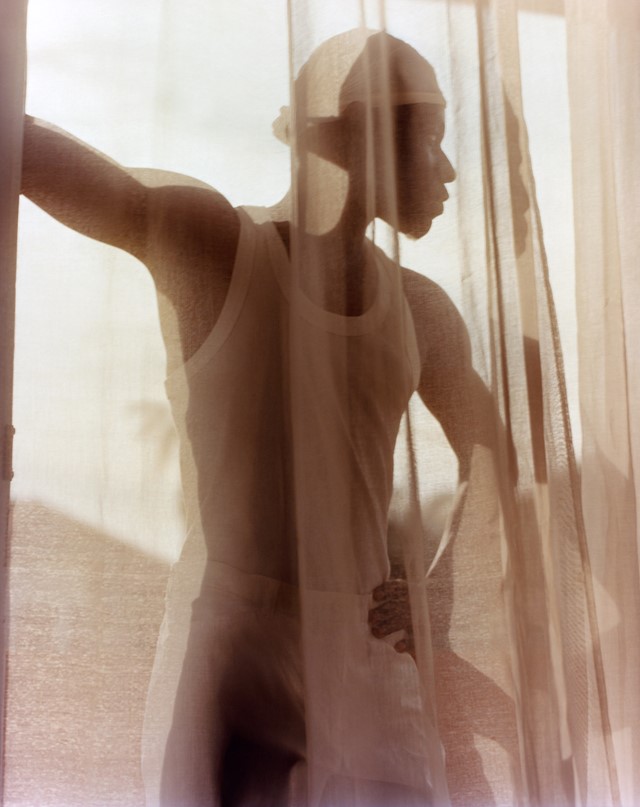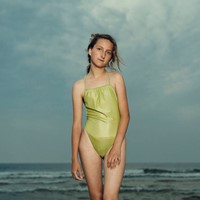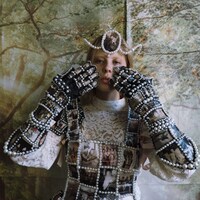Shot over six years, Good News is the new photo book shining a light on Ghana’s youth culture
In 2016, photographer Kyle Weeks was wandering through the Circle, a bustling transport hub and market in the epicentre of Ghana’s capital city, Accra, when he spotted a merchant known as Prince holding an armful of gold chains.
Weeks was in Accra for a month following a friend’s recommendation to see the city. Although Weeks had no expectations or plans to make pictures, he’d taken his camera. “I immediately ran up to [Prince] and asked him to take his picture. He loved the attention,” recalls Weeks. “That image was a starting point for me when I realised there was an innate sense of style to capture.”
He returned every year, sometimes multiple times, for month-long visits over the next six years. Weeks estimates he photographed more than 70 people, a collection of which has been published in his book, Good News, launched last week at Amsterdam’s prestigious photography museum, Huis Marseille.
Good News emerges from Weeks’ frustration with the lack of positive news stories about Africa, with the book’s title acting as an affirmation. It adds to the lineage of African photographers representing Africa through the lens of youth culture and style, dating back decades. West African photographers, like James Barnor, Malick Sidibe, Seydou Keïta, and Philip Kwame Apagya – acknowledged in Good News’ foreword – each reclaimed the image of Africans through studio portraiture, showing how style could express personal and cultural identity.
“I hope my project offers something positive, forward-thinking, focusing on youth because they are the future” – Kyle Weeks
Like those pioneering photographs, Weeks’ also observes this style zeitgeist through Ghana’s youth, their clothes often sourced from Kantamanto, one of the world’s largest second-hand clothing markets. “[Good News] started when I was photographing more fashion,” he explains. “Naturally, I found myself drawn to people who are expressive through clothes, but it was also the people I met and the circles I worked in. They were pushing fashion in Ghana; young stylists, models, musicians.”

Spliced in between, we see the vast beauty of the city – from the bustling markets to its beaches hugging the coastline of the Atlantic Ocean. There are quiet street observations: a scratched green car bumper, trees stretching towards the sun or shadows settling onto a warm wall. “I wanted to show the texture and surroundings so that the book bursts out of the edges with detail,” Weeks says. “It’s an all-encompassing experience – from sights, sounds, and smells. It’s hard to explain that to somebody that’s never been to West Africa, but it’s so visceral. I want that feeling to come across in the book.”
As a white African born in Namibia with European heritage, the problematic history of white photographers documenting Africa isn’t lost on Weeks.” There’s been a lot of misrepresentation. That legacy lingers today in many people’s perceptions of Africa,” he remarks, explaining it’s why Good News was seven years in the making.
“I feel the work I make being an insider-outsider in Africa demands that slow pace, which my long-term personal bodies of work deserve,” Weeks continues. “It’s as much about making good images as building relationships. I always show them the pictures before publishing them because I want them to feel proud of how they’re represented. Collaboration is an important part of this book.”

In many cases, these relationships go beyond his frames: there’s the friend, John Nii Commey Tetteh (aka Tot Man), who he helped open a chicken shop through Crowdfunding proceeds, and the project’s catalyst, Prince, who Weeks also photographed for i-D. 50 per cent of the sales from the book’s prints will also go back into the pockets of those whose photograph sells.
Good News wants to be just one of many positive stories coming out of Africa. It’s Weeks’ perspective on the city that he fell in love with. “I hope my project offers something positive, forward-thinking, focusing on youth because they are the future,” he says. It’s fitting, then, that Good News closes on an image of Abrokwah, a man running a youth outreach program for at-risk young people.
Abrokwah, who previously performed in a circus in Germany, now teaches young people his tricks and often hosts street performances. In Weeks’ final photograph, Abrokwah rides a giraffe unicycle dressed in white as young people follow him in awe. “It's such a beautiful image to end the book because the youth is looking up at him,” Weeks says. Abrokwah looks like an angel guiding his people towards the light – a divine intervention epitomising Ghana’s past, present and future.
Good News is available to purchase now. Prints will be available through Galerie Number 8, with a book launch in Paris happening from June 22 – 23, hosted and sponsored by Farago Productions at Chapelle XIV in the 18th arrondissement.










